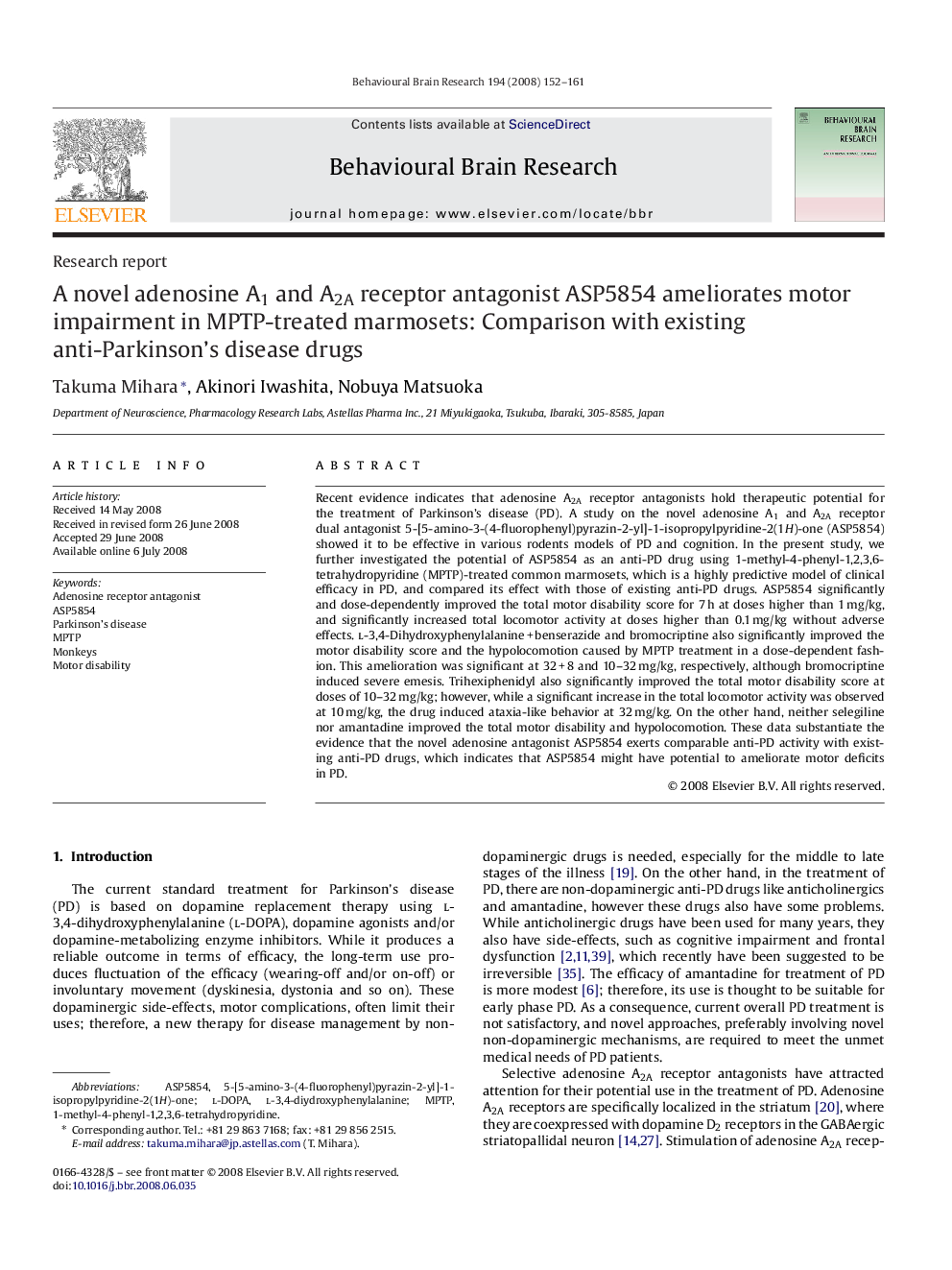| Article ID | Journal | Published Year | Pages | File Type |
|---|---|---|---|---|
| 4315188 | Behavioural Brain Research | 2008 | 10 Pages |
Recent evidence indicates that adenosine A2A receptor antagonists hold therapeutic potential for the treatment of Parkinson's disease (PD). A study on the novel adenosine A1 and A2A receptor dual antagonist 5-[5-amino-3-(4-fluorophenyl)pyrazin-2-yl]-1-isopropylpyridine-2(1H)-one (ASP5854) showed it to be effective in various rodents models of PD and cognition. In the present study, we further investigated the potential of ASP5854 as an anti-PD drug using 1-methyl-4-phenyl-1,2,3,6-tetrahydropyridine (MPTP)-treated common marmosets, which is a highly predictive model of clinical efficacy in PD, and compared its effect with those of existing anti-PD drugs. ASP5854 significantly and dose-dependently improved the total motor disability score for 7 h at doses higher than 1 mg/kg, and significantly increased total locomotor activity at doses higher than 0.1 mg/kg without adverse effects. l-3,4-Dihydroxyphenylalanine + benserazide and bromocriptine also significantly improved the motor disability score and the hypolocomotion caused by MPTP treatment in a dose-dependent fashion. This amelioration was significant at 32 + 8 and 10–32 mg/kg, respectively, although bromocriptine induced severe emesis. Trihexiphenidyl also significantly improved the total motor disability score at doses of 10–32 mg/kg; however, while a significant increase in the total locomotor activity was observed at 10 mg/kg, the drug induced ataxia-like behavior at 32 mg/kg. On the other hand, neither selegiline nor amantadine improved the total motor disability and hypolocomotion. These data substantiate the evidence that the novel adenosine antagonist ASP5854 exerts comparable anti-PD activity with existing anti-PD drugs, which indicates that ASP5854 might have potential to ameliorate motor deficits in PD.
